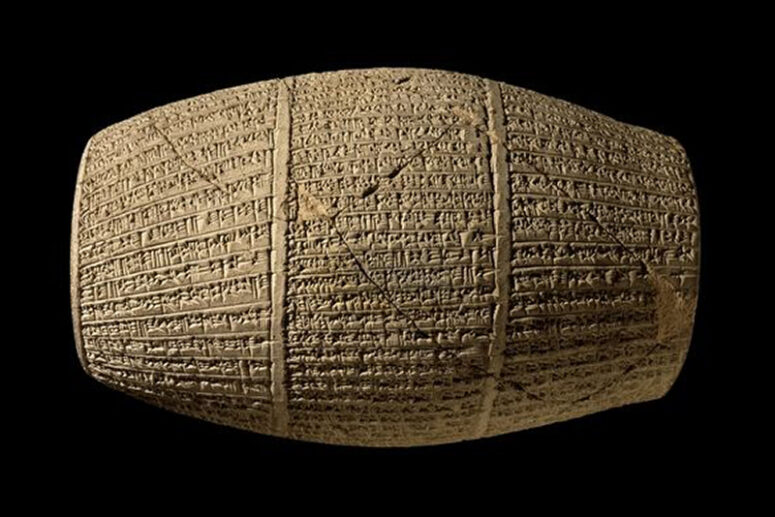
This archaeological find has reminded Bible critics that history is a science, i. e. a cluster of knowledge, which is perfected as mankind develops and accumulates new data about the past.
Until the middle of the 19th century, critics of the Holy Scriptures were convinced that the Babylonian king Belshazzar (the one who saw the handwriting on the wall during a feast (Dan 5: 5)) never really existed and was merely an invention of Daniel the prophet. Not a single mention of Belshazzar had been found in either the Babylonian or Persian archives until 1854, when British Colonel John George Taylor discovered a clay cylinder inscribed in cuneiform, while excavating the ancient city of Ur.
That became the first archaeological find speaking of king Bel-shar-usur (this is what Belshazzar’s name sounded like in the Babylonian language). Among other things, the cylinder contained a prayer of the Babylonian king Nabonidus, in which he asked for a long life for himself and his eldest son Belshazzar, the heir to the throne.
Later, archaeologists discovered other evidence proving the existence of King Belshazzar, but this particular cylinder was the first to be used by biblical archaeology as irrefutable evidence of the historicity of the events and people mentioned in the Holy Scriptures.
This is also important for Christians, because Christ often turned to stories and prophecies from the Old Testament in His sermons, holding up Abraham, Moses, David and other old testament figures as an example of righteousness.
Sergey Kovach. PhD in Theology, lecturer at the Kiev Theological Academy
Translated by The Catalogue of Good Deeds
Source: https://foma.ru/cilindr-nabonida-kak-jetot-artefakt-dokazyvaet-istorichnost-vethozavetnyh-sobytij.html





The Nabonidus cylinder confirms the existence of belshazzar but does not say he was king. There is no evidence from babylonian or Persian sources that he was ever more than the crown prince/prince regent. Likewise there is no indication that he was related to nebuchadnezzar, as the Bible claims, though some have posited that his father nabonidus may have married a daughter of nebuchadnezzar (bur this is pure speculation). And finally the idea that a man named Darius succeeded belshazzar as king of babylon is completely without historical support. Our inscriptions, our later historians, and the book of Isaiah, all support that it was cyrus the great who came to power after the overthrow of nabonidus. Some have posited that Darius was a satrap, a minor king ruling underneath cyrus, but it this is not what the book of Daniel suggests, as it states that cyrus ruled after Darius. The author of Daniel also said that Darius was son of xerxes (ahaseurus). There was later a Persian king named Darius with a son named zeroes (ahaseurus). The author of Daniel quite likely confused his Persian rulers. Neither this hypothetical earlier Darius nor his father xerxes are mentioned anywhere in inscriptions from the time, nor do such inscriptions seem to allow for the possibility of his rule. Clearly we would be wisest to admit the book of Daniel is in error.